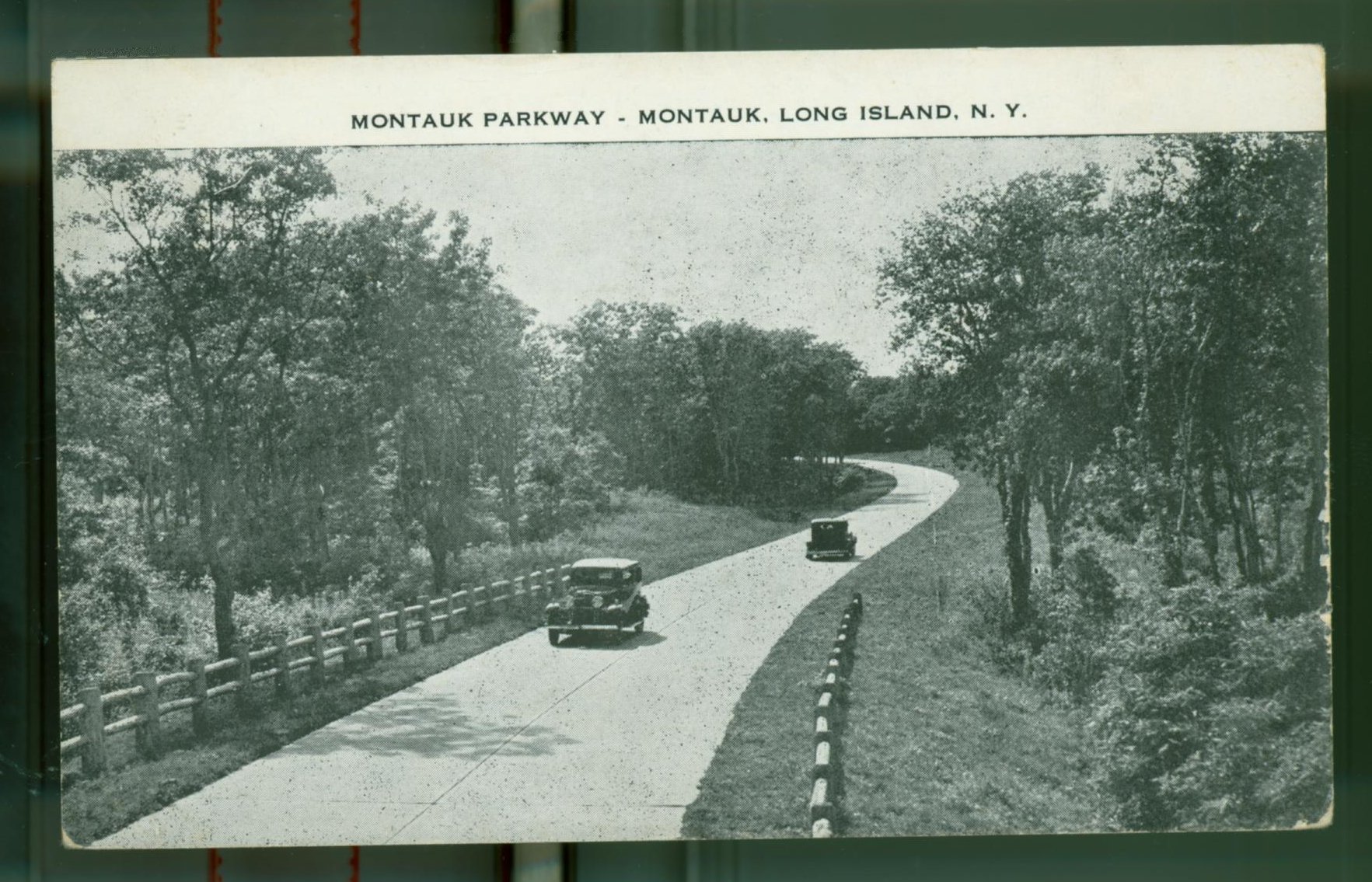
Traffic this weekend won’t be so tranquil, so here’s a look at Montauk’s parkway in the 1930s. We’re not sure if this is the stretch running through Hither Hills or the one at Montauk Point, but in either case we can thank Robert Moses, the former state park commission president, for the view.
When Moses established two state parks in Montauk, as well as others on Long Island, he pushed hard to roll out parkways, as well, to make them accessible.
Moses envisioned picturesque roads unscarred by advertisements, hot dog stands, filling stations, and the like. “He wanted the parkways to be broader and more beautiful than any roads the world had ever seen, landscaped as private parks are landscaped so that they would be in themselves parks, ‘ribbon parks,’ so that even as people drove to parks, they would be driving through parks.” Robert Caro wrote in “The Power Broker,” his Moses biography.
Moses hoped to link the state parks at Hither Hills and Montauk Point with a single parkway, but property in Montauk’s downtown area had already been sold for commercial development. Instead, two sections of parkway were to be paved at each end of that four-mile stretch north of the existing Montauk Highway. With restrictions against “any possible disfigurement,” the two sections would provide access to “one of the finest landscapes on the Atlantic Seaboard,” keeping it “free from the eyesores which seem to be an inevitable feature of practically every highway on Long Island,” Moses told local residents.
There seems to have been little resistance to his plan to run a section of the new parkway north of the existing highway from Third House to Montauk Point. Eventually most of that old highway, except a portion southeast of Third House, was closed to traffic. However, local residents and visitors alike mounted stiff opposition to the anticipated demise of the popular oceanfront highway running from Second House to Hither Hills. Some framed it as a class issue: Wealthy property owners or real estate moguls wanted to expand their waterfront property inland to where the old road was – all at the expense of a poor man’s enjoyment of the ocean view from his automobile.
Moses countered that that stretch of the existing highway was unsuitable to be improved into a parkway. It would cost too much to purchase easements from property owners, the dunes were too close to the road, the grade was prohibitive, and the commission had already invested tons of time negotiating for the northern route. He also noted that creating the new parkway would cost the town nothing. The question of closing the old highway, he said, would be up to the town board. The town never did close the scenic, southern section of the highway running from Second House to Hither Hills. And that explains why motorists get to choose between two picturesque Montauk Highways at the eastern end of Napeague: Old and New.

Reply or Comment